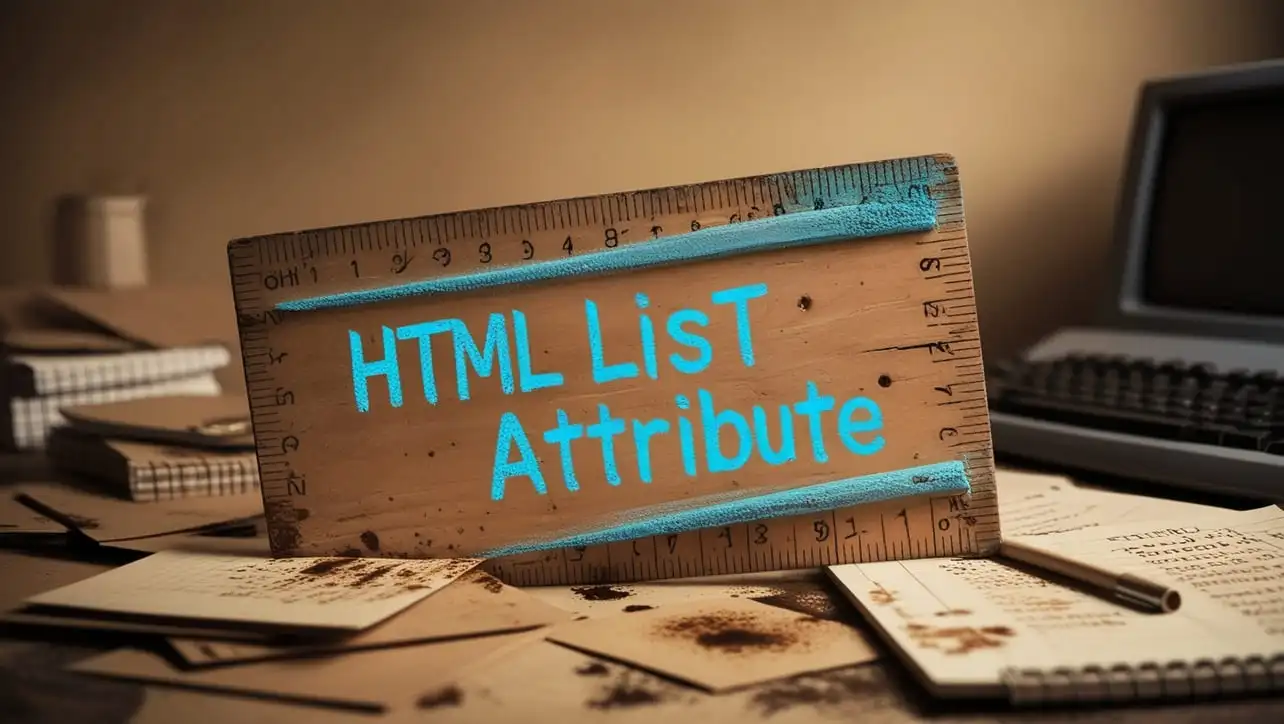
HTML Topics
- HTML Intro
- HTML Basic
- HTML Editors
- HTML CSS
- HTML Tags
- HTML Deprecated Tags
- HTML Events
- HTML Event Attributes
- HTML Global Attributes
- HTML Attributes
- abbr
- accept
- accept-charset
- accesskey
- action
- align
- alt
- archive
- as
- async
- autocapitalize
- autocomplete
- autofocus
- autoplay
- axis
- bgcolor
- border
- cellpadding
- cellspacing
- char
- charoff
- charset
- checked
- cite
- class
- classid
- codebase
- codetype
- color
- cols
- colspan
- compact
- content
- contenteditable
- controls
- coords
- crossorigin
- data
- data-*
- datetime
- declare
- default
- defer
- dir
- dirname
- disabled
- download
- draggable
- enctype
- enterkeyhint
- for
- form
- formaction
- formenctype
- formmethod
- formnovalidate
- formtarget
- frame
- frameborder
- frameset
- headers
- height
- hidden
- high
- href
- hreflang
- hspace
- http-equiv
- id
- inert
- inputmode
- ismap
- kind
- label
- lang
- list
- loop
- low
- max
- maxlength
- media
- method
- min
- multiple
- muted
- name
- novalidate
- onabort
- onafterprint
- onbeforeprint
- onbeforeunload
- onblur
- oncanplay
- oncanplaythrough
- onchange
- onclick
- oncontextmenu
- oncopy
- oncuechange
- oncut
- ondblclick
- ondrag
- ondragend
- ondragenter
- ondragleave
- ondragover
- ondragstart
- ondrop
- ondurationchange
- onemptied
- onended
- onerror
- onfocus
- onhashchange
- oninput
- oninvalid
- onkeydown
- onkeypress
- onkeyup
- onload
- onloadeddata
- onloadedmetadata
- onloadstart
- onmousedown
- onmousemove
- onmouseout
- onmouseover
- onmouseup
- onmousewheel
- onoffline
- ononline
- onpagehide
- onpageshow
- onpaste
- onpause
- onplay
- onplaying
- onpopstate
- onprogress
- onratechange
- onreset
- onresize
- onscroll
- onsearch
- onseeked
- onseeking
- onselect
- onstalled
- onstorage
- onsubmit
- onsuspend
- ontimeupdate
- ontoggle
- onunload
- onvolumechange
- onwaiting
- onwheel
- open
- optimum
- pattern
- placeholder
- popover
- popovertarget
- popovertargetaction
- poster
- preload
- readonly
- rel
- required
- reversed
- rows
- rowspan
- sandbox
- scope
- selected
- shape
- size
- sizes
- span
- spellcheck
- src
- srcdoc
- srclang
- srcset
- start
- step
- style
- tabindex
- target
- title
- translate
- type
- usemap
- value
- width
- wrap
- HTML Comments
- HTML Entity
- HTML Head
- HTML Form
- HTML IndexedDB
- HTML Drag & Drop
- HTML Geolocation
- HTML Canvas
- HTML Status Code
- HTML Language Code
- HTML Country Code
- HTML Charset
- MIME Types
HTML list Attribute

Photo Credit to CodeToFun
🙋 Introduction
The list attribute is an HTML feature that enhances the semantics of form elements, particularly associated with the <input> element.
This attribute is used to connect an <input> element with a <datalist> element, providing a predefined set of options for user input.
🎯 Purpose of list
The primary purpose of the list attribute is to associate an <input> element with a set of predefined options, allowing users to choose from a specific list of values.
This can improve user experience by providing a clear and concise selection of choices, especially in situations where users need to input specific data.
💎 Values
The list attribute accepts the id of a <datalist> element as its value.
This id serves as a reference, linking the <input> element to the corresponding <datalist> element. Here's a simple example:
<label for="fruit">Select a Fruit:</label>
<input type="text" id="fruit" name="fruit" list="fruits">
<datalist id="fruits">
<option value="Apple">
<option value="Banana">
<option value="Orange">
<option value="Grapes">
<option value="Strawberry">
</datalist>🧠 How it Works
In this example, the list attribute is set to fruits, connecting the <input> element to the <datalist> element with the corresponding id.
🔄 Dynamic Values with JavaScript
You can dynamically update the list attribute using JavaScript, allowing for more interactive and responsive user interfaces. Consider the following example:
<script>
// Dynamically set the list attribute based on user interaction
function updateListAttribute() {
var inputElement = document.getElementById("dynamicInput");
var dataListId = (/* your logic to determine the appropriate list id */);
inputElement.list = dataListId;
}
</script>🧠 How it Works
In this script, the list attribute of an input field with the id "dynamicInput" is updated based on some dynamic logic. This approach allows you to adjust the available options dynamically, enhancing the flexibility of your forms.
🏆 Best Practices
- Use the
listattribute when you want to provide users with a predefined set of options for input. - Ensure that the id specified in the
listattribute corresponds to the id of a valid <datalist> element. - Consider using JavaScript to dynamically update the
listattribute for a more responsive user experience.
🎉 Conclusion
The list attribute is a valuable tool for creating interactive and user-friendly forms in HTML.
By associating <input> elements with <datalist> elements, you can guide users through a predefined set of options, making data input more efficient and error-resistant.
👨💻 Join our Community:
Author

For over eight years, I worked as a full-stack web developer. Now, I have chosen my profession as a full-time blogger at codetofun.com.
Buy me a coffee to make codetofun.com free for everyone.
Buy me a Coffee












If you have any doubts regarding this article (HTML list Attribute), please comment here. I will help you immediately.